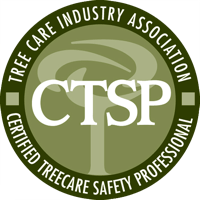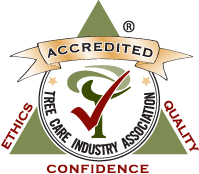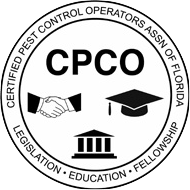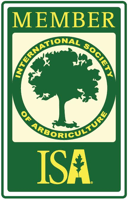When most people think about tree care, they envision routine tasks like trimming branches or removing fallen limbs. However, one of the most crucial—and often overlooked—services is a tree risk assessment. Especially in a region like South Florida, where hurricanes and tropical storms can strike yearly, understanding a tree’s structural integrity is key to preventing costly damage and ensuring public safety.
This post will walk you through the steps of a professional tree risk assessment, explaining why it’s an essential investment for property owners, property managers, and business operators. By the end, you’ll have a clearer picture of how arborists identify potentially hazardous trees and what can be done to mitigate those risks.
Why Are Tree Risk Assessments Important?
- Safety: A compromised tree can shed heavy branches or topple completely, posing dangers to people and property.
- Liability: If a tree on your property falls and causes injury or damage, you may be held legally responsible.
- Cost Savings: Proactive identification of issues is far cheaper than emergency removals or building repairs after a collapse.
- Aesthetics & Property Value: Healthy, stable trees enhance curb appeal and can positively impact real estate value.
Step 1: Preliminary Visual Inspection
The first phase involves a ground-level walk-around of the tree and its surroundings. The arborist observes the canopy, trunk, root collar, and surrounding soil to spot any visible warning signs. These can include:
- Dead or Dying Limbs: Bare branches or sections that fail to produce leaves in the growing season.
- Cracks or Splits: Vertical or horizontal fissures in the trunk or main branches.
- Fungal Growth: Mushrooms or conks indicate possible internal decay.
- Leaning: A noticeable lean might suggest root damage or imbalance.
During this step, the assessor also notes any external factors like nearby structures, power lines, or foot traffic areas that could be impacted if the tree fails.
Step 2: Evaluating the Environment
Next, the arborist looks at soil conditions, drainage, and the general environment. Trees in South Florida often face shallow root systems due to sandy or waterlogged soil. Additionally, the climate fosters rapid fungal growth and pest activity, which can accelerate decay. Key considerations include:
- Soil Compaction: Heavy foot or vehicle traffic can compress soil, impeding root growth.
- Moisture Levels: Overly saturated soil can weaken roots, while overly dry conditions stress the tree.
- Competing Vegetation: Nearby plantings may draw nutrients or water away from the tree.
Understanding these environmental elements helps paint a comprehensive picture of the tree’s health and stability.
Step 3: Tools & Diagnostic Tests
If visual signs suggest deeper issues, the arborist may employ specialized tools:
- Resistograph: Drills a small needle into the wood to measure resistance, indicating areas of decay or hollow trunks.
- Sonic Tomograph: Sends sound waves through the trunk; variations in wave speed can pinpoint rot or voids inside.
- Increment Borers: Extract tiny core samples to study growth rings and internal wood conditions.
These diagnostics confirm internal decay or structural weaknesses that aren’t apparent from the outside.
Step 4: Identifying Pests & Diseases
A thorough tree risk assessment also includes a health check for pests and pathogens. In South Florida, common threats include:
- Termites & Wood-Boring Beetles: Hollow out branches and trunks, severely weakening the tree.
- Ganoderma Butt Rot: A lethal fungus that affects palms and other species.
- Fusarium Wilt: Blocks the tree’s vascular system, causing wilting and eventual death of leaves or fronds.
Early detection can lead to targeted treatments—such as injections, controlled pruning, or soil amendments—to save the tree (and surrounding ones) from widespread infestation or infection.
Step 5: Risk Rating & Recommendations
After collecting data, the arborist assigns a risk rating based on two main factors: the likelihood of tree or branch failure and the consequences if that failure occurs. For example, a large tree leaning over a busy sidewalk would carry a higher risk rating than a similarly leaning tree in a seldom-used back field.
Based on this rating, the arborist provides recommendations:
- Pruning: Removing dead or weak limbs to reduce weight and breakage risk.
- Cabling & Bracing: Installing hardware to support weak trunks or branches, particularly for trees with multiple trunks (codominant stems).
- Pest/Disease Treatments: Applying fungicides, insecticides, or fertilizers to improve tree health.
- Monitoring: Scheduling regular assessments to watch for progression of any detected issues.
- Removal: If the tree poses an unacceptable risk and corrective measures aren’t feasible, removal might be the safest choice.
Step 6: Documentation & Follow-Up
The final step often involves a written report detailing findings and suggested actions. This document can be crucial for insurance claims, city permit applications, or homeowner association requirements. The arborist may also create a timeline for follow-up assessments to track any changes in the tree’s condition.
Frequently Asked Questions
- How often should I get a tree risk assessment?
Most professionals recommend an assessment every two to three years for mature trees, or annually if the tree shows signs of stress or is located in a high-traffic area. - Can a high-risk tree ever be saved?
Sometimes! Cabling, bracing, or removing specific limbs can reduce failure risk. However, if the trunk or roots are severely decayed, removal may be the only safe course. - Will my insurance cover tree removal if a risk is detected?
Policies vary. While some insurance plans may cover removal after a tree causes damage, proactive removal for a risky tree may not be covered. It’s always best to check with your provider. - Is a permit required to remove a risky tree in South Florida?
Many local municipalities require permits for removal, especially if the tree is of a protected species or above a certain size. A certified arborist can guide you through the process.
Conclusion
A tree risk assessment is more than a cursory glance at the canopy; it’s a detailed, data-driven process aimed at preventing accidents and preserving valuable green assets. Especially in storm-prone South Florida, understanding a tree’s structural integrity can make the difference between minor pruning costs and significant damage to property or, worse yet, injury to people.
If you’re concerned about the health or stability of any tree on your property, don’t wait for the next storm to reveal its weaknesses. Contact Zimmerman Tree Service for a comprehensive tree risk assessment. Our certified arborists use top-tier methods to evaluate hazards and offer solutions that balance safety, aesthetics, and the environmental well-being of your landscape.





